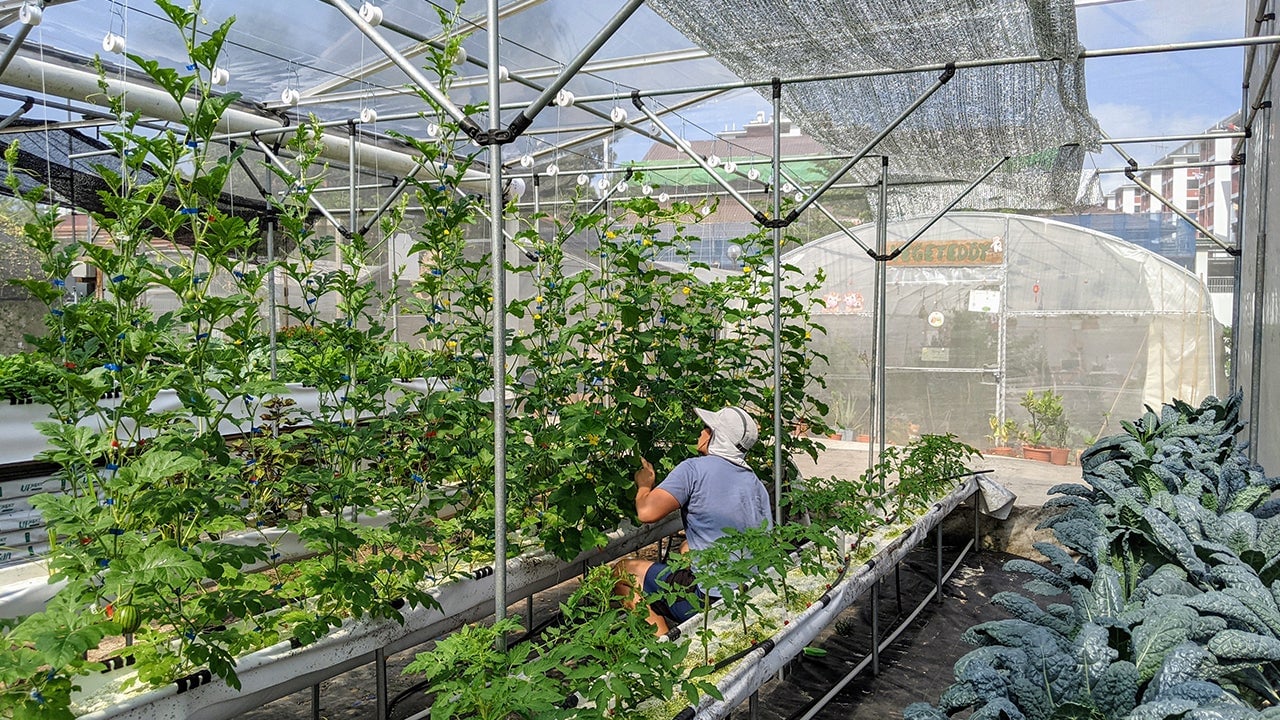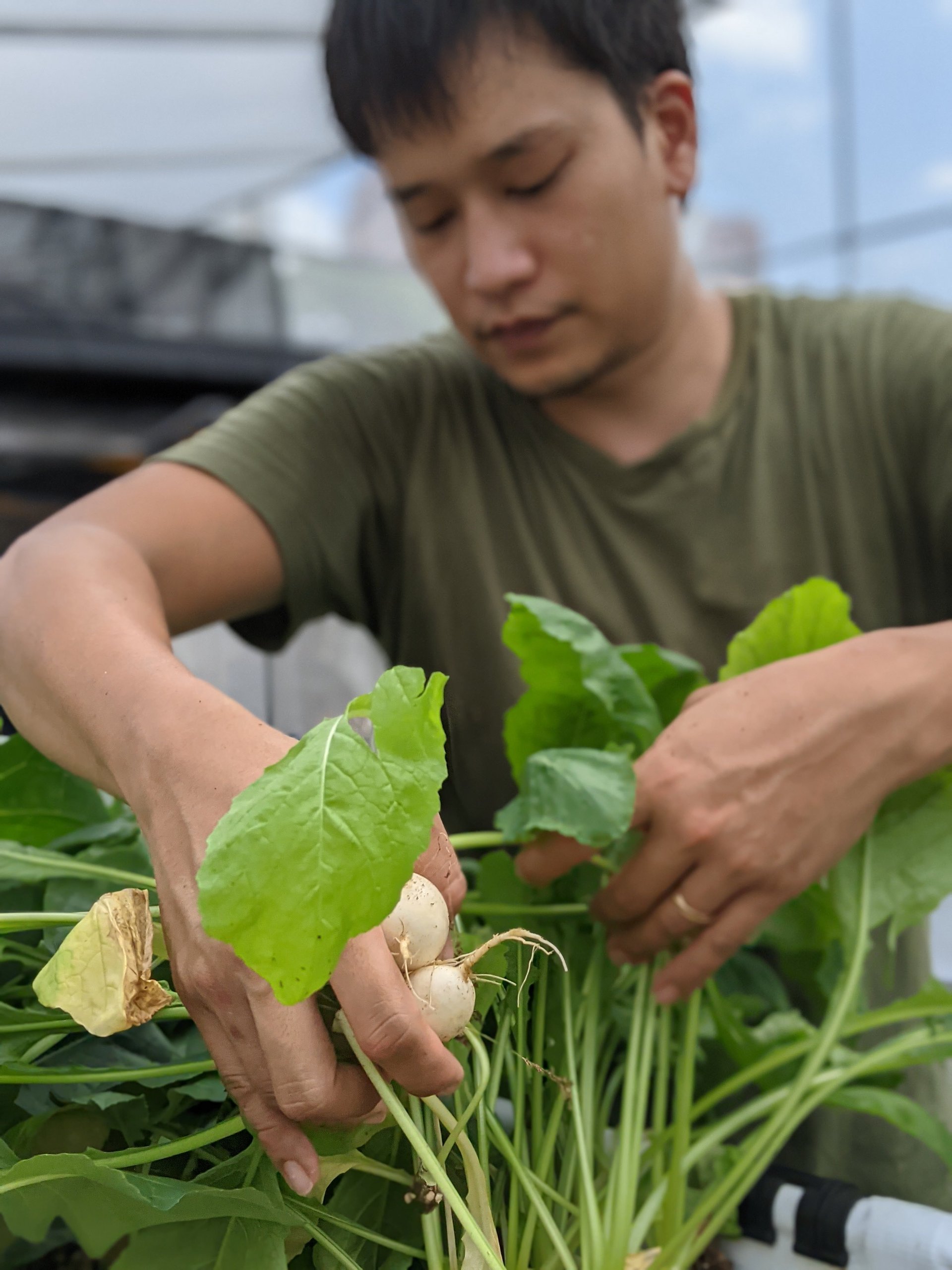How a Singaporean farmer is building a better greenhouse for tropical urban farming
For Ben Ang, founder of Natsuki’s Garden and also known as “Farmer Ben”, his experience as a horticulturist led to researching and designing his own greenhouse in a former schoolyard. Outdoor spaces in Singapore are being reused with small lots for individuals to experiment with growing their own produce. “A lot of protocols that have been developed for farming have been developed for temperate regions, places like the US and Europe, but it’s not tropical. I tweak methods, tailoring processes to our environment here,” explained Ang.


For Ben Ang, founder of Natsuki’s Garden and also known as “Farmer Ben”, his experience as a horticulturist led to researching and designing his own greenhouse in a former schoolyard. Outdoor spaces in Singapore are being reused with small lots for individuals to experiment with growing their own produce. “A lot of protocols that have been developed for farming have been developed for temperate regions, places like the US and Europe, but it’s not tropical. I tweak methods, tailoring processes to our environment here,” explained Ang.

In particular, Ang designed his greenhouse to have a V-shaped roof, allowing hot air to escape the sides. “Most greenhouses are a hoop shape with a high point in the middle, and that’s really good if you’re in a temperate place. You need to balance between keeping the greenhouse warm in the winter and cool in the summer. Well, our summer heat is basically year-round. So we have the chance to optimize the structure.”
Getting higher yields from the greenhouse
Better air circulation in the greenhouse also helps with production yields, allowing Ang to grow 60 to 80 kg of food per square meter on his own. “The greenhouse design allows me to feel I could work through the entire day and not feel the heat, whereas if I was in a typical greenhouse, I would try not to stay inside for more than ten minutes.”
Ang has one bed for large crops like cucumbers, tomatoes, peppers, and watermelon; a second bed for leafy greens, and a third bed filled with his custom potting mix to test new plants. “It’s a matter of growing the plants, seeing how they do, identifying the problems, and then tweaking the way that we grow them,” Ang explained. Ang hopes to produce enough to satisfy a small market, not enough for a supermarket but enough for 30-50 people per week.
The benefits of an urban farm near the city center
Orders are made online with pick-ups at the greenhouse. “We’re not in the middle of nowhere, we’re quite close to the city center,” Ang said. “It’s like a street vegetable market, but put into a building structure with more sanitary conditions. I believe that because of the virtue that we’re so close to the consumer, the quality is vastly superior to even some high-end places.”
🎧 For more intel on sustainable farming, listen to the Quartz Obsession podcast episode on kudzu. Or subscribe via: Apple Podcasts | Spotify | Google | Stitcher.
Produce from Natsuki’s Garden can be sold at a cheaper price than grocery stores, with more profit for Ang. “Some of these supermarkets, they would take your produce and sell it at $20 a kilo, but they would take about 50% of the profit. That just didn’t really make sense because I know I can get higher quality produce to the consumer, for a lower price, and I would still get a higher margin.”